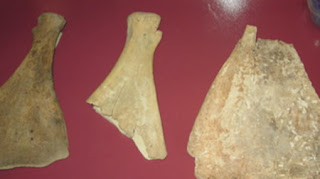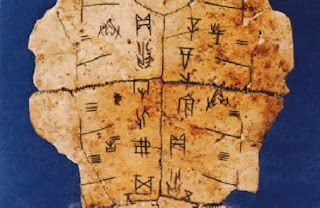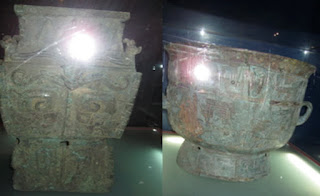Historical Wonders of Anyang, China
 |
| The Burial Pit inside of Fu Hao’s tomb |
 |
| Oracle bones |
In 1899, a scholar, Wang Yirong, was suffering from malaria. Traditional Chinese medication was prescribed to treat his disease. A carved bone, which was one of the ingredients of his medication, caught his attention and he concluded that these bones could be samples of China's earliest writing. The bones were indeed traced to Yinxu (“ruins of Yin”, or today’s Anyang) in the Henan province, the capital of the late Shang Dynasty. Since that time, over 150,000 pieces of Oracle bone inscriptions have been excavated from this location.
 |
| Oracle bone inscriptions |
Excavations at Yinxu have been ongoing, but many Shang tombs in Yinxu were looted before researchers had a chance to excavate. In recent times, archeologists discovered a smaller and totally undisturbed tomb near the Royal tombs in 1976. This tomb was identified as the final resting place of the queen and military general, Fu Hao, who died around 1250 BCE and who was one of King Wu Ding’s many wives. Inside the tomb, in addition to the remains of the queen, there were also 6 dog skeletons, 16 human slave skeletons, and over 1,900 objects, including pieces of bronze vessels, jade and gem objects, pottery, and other items of huge archaeological value. According to the inscriptions on the bones, the owner of the tomb, Fu Hao, was not only a warrior, but also a government functionary who participated in state affairs and presided over royal ceremonies. These tasks were normally honorary tasks carried out by royal noblemen in ancient China. This is suggestive of Fu Hao’s unusual position—she was also the first documented female hero in China's history. The tomb was thoroughly restored as a museum and has been open to the public since 1999. In addition, it was also listed as a world heritage site on UNSECO 2006.
Forty years have passed since 1976, and more and more artifacts have been gathered, examined, and deemed connected to the Shang Dynasty. All of this information has provided important insights about the legendary Shang Dynasty. Last summer, I had the exciting opportunity of visiting this intriguing museum and seeing first-hand the brilliant legacy and history left behind by the Chinese more than three thousand years ago.
 |
| Bronzes from the tomb |
 |
| Samples of Oracle Bone script: A person leaning against a tree means rest (休); Cross (交); Bathing (浴 ); a Bear (熊) |
Fun with Chinese Characters by Tan Huay Peng. 495.1 PEN 2003
Understanding Chinese Characters by Their Ancestral Forms by Gam Go. 495.1 GO
The Chinese Language: Fact and Fantasy by John DeFrancis. 495.1 DEF
Oracle Bones: A Journey Between China’s Past and Present by Peter Hessler. NF 951 HES
The History of China by Kenneth Pletcher.Y 951 HIS
China: A New History by John King Fairbank. NF 951 FAI
—Jean Chou
Comments
Post a Comment